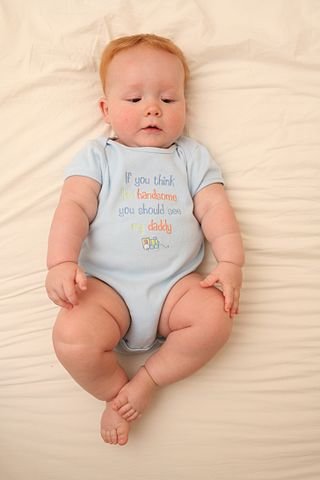Enhance your health with free online physiotherapy exercise lessons and videos about various disease and health condition
Newborn Reflexes
Primitive newborn reflexes are unique in the neonatal period, a consequence of the continued development of the CNS after birth. Any asymmetry, increase, or decrease in tone elicited by passive movement may indicate a significant CNS abnormality and requires further evaluation. Similarly a delay in the expected disappearance of the primitive reflexes may warrant an evaluation of the CNS.

The most important newborn reflexes are as follows:
The Moro reflex (newborn reflexes)
It is elicited by allowing the infant's head gently to move back suddenly (from a few inches off the crib mattress). This results in abduction and upward movement of the arms followed by adduction and flexion. The Moro reflex disappears by 4 to 6 months.
The rooting reflex (newborn reflexes)
It is elicited by touching the corner of the infant's mouth, resulting in the lowering of the lower lip on the same side with tongue movement toward the stimulus. The face may turn to the stimulus. The rooting reflex disappears at 4 to 6 months.
The sucking reflex (newborn reflexes)
It occurs with almost any object placed in the newborn's mouth. The infant responds with vigorous sucking. The sucking reflex is replaced later by voluntary sucking only.
The grasp reflex (newborn reflexes)
It occurs when placing an object, such as a finger, onto the infant's palm (palmar grasp) or sole (plantar grasp). The infant responds by flexing fingers or curling the toes. The palmar grasp usually disappears by 3 to 4 months and the plantar grasp by 6 to 8 months.
The asymmetric tonic neck reflex (ATNR)
It is elicited by placing the infant supine and turning the head to the side. This placement results in ipsilateral extension of the arm and the leg into a "fencing" position. The contralateral side flexes as well. This reflex disappears by 2 to 3 months of age.
The neurologic examination of a neonate is used to assess the function of the basal ganglia, brainstem, and more caudal structures. The results of the examination should be used cautiously in predicting developmental outcome.
Newborn Reflexes
1) Moro Reflex- Sudden head extension causes extension followed by flexion of the arms and legs
- Age of Appearance Birth
- Age of Disappearance 4-6 mo
- Origin in CNS Brainstem vestibular nuclei
2) Grasp Reflex- Placing a finger in palm results in flexing of the infant's fingers, accompanied by flexion at elbow and shoulder
- Age of Appearance Birth
- Age of Disappearance 4-6 mo
- Origin in CNS Brainstem vestibular nuclei
3) Rooting Reflex- Tactile stimulus about the mouth results in the infant's mouth pursuing the stimulus
- Age of Appearance Birth
- Age of Disappearance 4-6 mo
- Origin in CNS Brainstem trigeminal system
4) Galant Reflex (trunk incurvation)- Stroking the skin along the edge of the vertebrae produces curvature of the spine with the apex opposite to the direction of the stroke
- Age of Appearance Birth
- Age of Disappearance 4-6 mo
- Origin in CNS Spinal cord
5) Placing Reflex- Infant places foot on examining surface when dorsum of foot is brought into contact with the edge of the surface
- Age of Appearance Birth
- Age of Disappearance 4-6 mo
- Origin in CNS Cerebral cortex
6) Crossed Extension- One leg held firmly in extension and the dorsum and sole of the foot stimulated results in a sequence of flexion, extension, and adduction, followed by toe fanning of the opposite leg
- Age of Appearance Birth
- Age of Disappearance 4-6 mo
- Origin in CNS Spinal cord
7) Tonic Neck- With the infant supine, turning of the head results in ipsilateral extension of the arm and leg in a "fencing" posture
- Age of Appearance Birth
- Age of Disappearance 4-6 mo
- Origin in CNS Brainstem vestibular nuclei
8) Parachute Reflex- With the infant sitting, tilting to either side results in extension of the ipsilateral arm in a protective fashion
- Age of Appearance 6-8 mo
- Age of Disappearance Never
- Origin in CNS Brainstem vestibular nuclei
9) Landau Reflex- With the infant held about the waist and suspended, extension of the neck produces extension of the arms and legs
- Age of Appearance 6-8 mo
- Age of Disappearance 15 mo-2 yr
- Origin in CNS Brainstem
Numerous primitive newborn reflexes, present at birth, assess the functional integrity of the brainstem and basal ganglia. They are symmetric and disappear at 4 to 6 months of age, indicating the normal maturation of descending inhibitory cerebral influences (Moro reflex). The grasp and rooting reflexes are inhibited by maturation of frontal lobe structures and may reappear later in life with frontal lobe lesions. The Landau and parachute reflexes become apparent after the newborn period, indicating proper maturation of appropriate brain structures. Asymmetry or persistence of the primitive reflexes may indicate focal brain or peripheral nerve lesions.
Posture
Posture is the position that an infant naturally assumes when placed supine. An infant at 28 weeks of gestation shows an extended posture. By 32 weeks, there is a slight trend toward increase in tone of the lower extremities with more lower extremity flexion. At 34 weeks, the lower extremities are flexed, and the upper extremities are extended. At term, the infant flexes lower and upper extremities. Recoil is defined as a liveliness with which an arm or leg springs back to its original position after passive stretching and release. Recoil is essentially absent in a small premature infant but is brisk at term.
Movement and Tone
Spontaneous movements of a small premature infant are slow and writhing. Spontaneous movements of a term infant are more rapid. The popliteal angle, heel-to-ear maneuver, scarf maneuver, and head control are used in assessing muscle tone and estimating gestational age .
Return from newborn reflexes to Orthopedic Physiotherapy
Return from newborn reflexes to Home Page
Read more about neonatal care here :-
